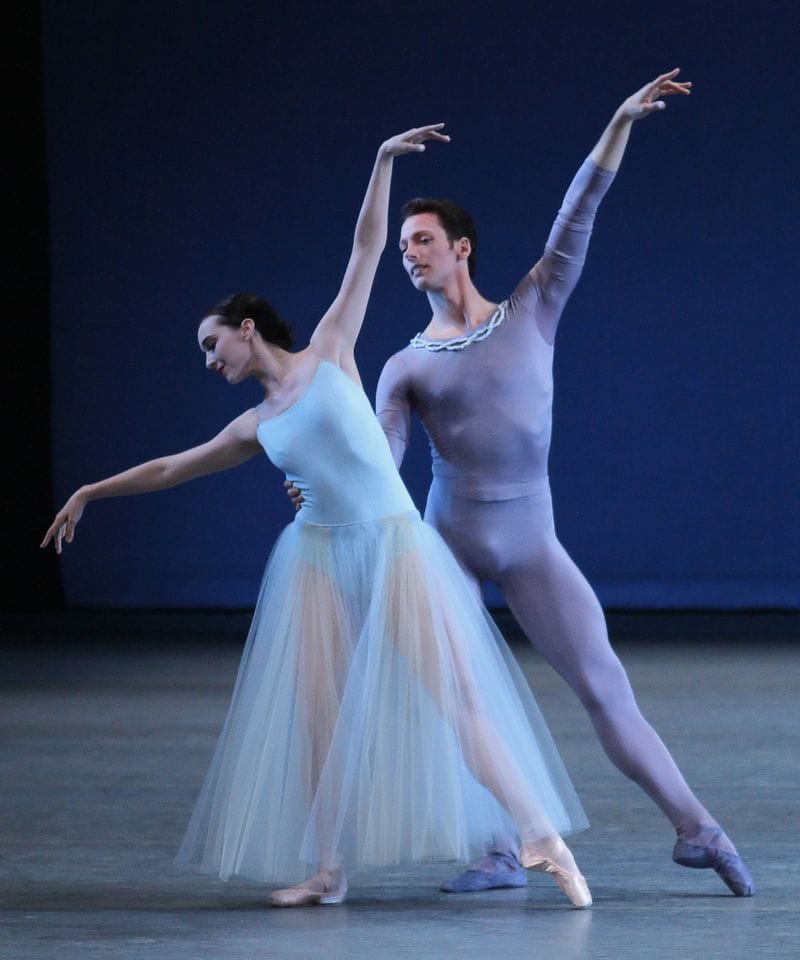Goodbye, Sweet Prince

"Serenade", "Who Cares?", "Chaconne"
New York City Ballet
David H. Koch Theater
New York, NY
June 13, 2010
Philip Neal gave his farewell performance at NYCB Sunday afternoon to an appreciative audience, who applauded his every entrance. These entrances, like his career, were understated, elegant, and devoted to the art. He had originally been scheduled to perform what looked like a tag-team arrangement of Balanchine's boisterous "Who Cares?", but the final program saw him in "Serenade" and finally in "Chaconne"; this was apparently his choice for his final appearance, and that elegiac and courtly work was a fine summation of his virtues. "Serenade" centers on its women, and Neal made his first entrance unobtrusively in the back, focused on Jenifer Ringer as his waltz partner; I expect I was not the only one with tears in my eyes at the sight of such loving generosity. "Serenade" was magnificently performed by all its dancers, including Ringer as the watlz girl, Megan Fairchild in the Russian variation, and Sara Mearns as the so-called Dark Angel. Ringer brought a wonderful range of emotions to her role, without over-dramatizing the feeling of loss. Fairchild, too, was very expressive, going from explosive jumps to the mysterious sadness of the sisterhood, gently offering her hand in that beautiful vignette of comfort and sorrow. Mearns used her pliant back and power to haunting effect.
"Who Cares?", which was performed without the glorious soloist dances, presumably in an effort to save time, featured Robert Fairchild as the hoofer, a role so ably danced by Neal for many years. It is certainly in good hands, as Fairchild combined the casualness of the role's spirit with the technical rigor. Tiler Peck was the one who loved him, and she danced with wit, flair, and a rich understanding of the nuances of the choreography. She made the signature movement of the pulling back of her arm as powerful as an aria, as she seemed to be saying "Maybe, just maybe, this is the one". This gradual buildup of intensity is so much more moving than a generalized romantic rush. Sterling Hyltin built the stairway with a charming coltishness. Ana Sophia Schleller is not coltish, she is a precise and centered classicist, possibly a bit too centered for the jazz baby, but her turns were thrilling.
Wendy Whelan shared "Chaconne's" rarefied atmosphere with Neal. The opening "Dance of the Blessed Spirits" is one of Balanchine's most beautiful evocations of mystery, and the long-haired, chiffon-encrusted acolytes waft gently through the atmosphere. Neal again makes an unobtrusive entrance, as if drawn in by some gentle power. Whelan's magnificent control and mysterious power made her seem to float above the stage.
The second half of the work, the "meanwhile, back in Paradise" section, was properly bright. The complex and musical variations poured forth in a glorious stream, leading up to the pas de deux, which was a private conversation between two gracious and grown up people that the audience was privileged to overhear. Neal's variation, with the elegant beats, was sharp and clear; he is certainly leaving near the top of his game. The final curtain calls were prolonged, with many flowers, hugs, and cheers. A classy send-off for an always classy dancer.
Copyright © 2010 by Mary Cargill



